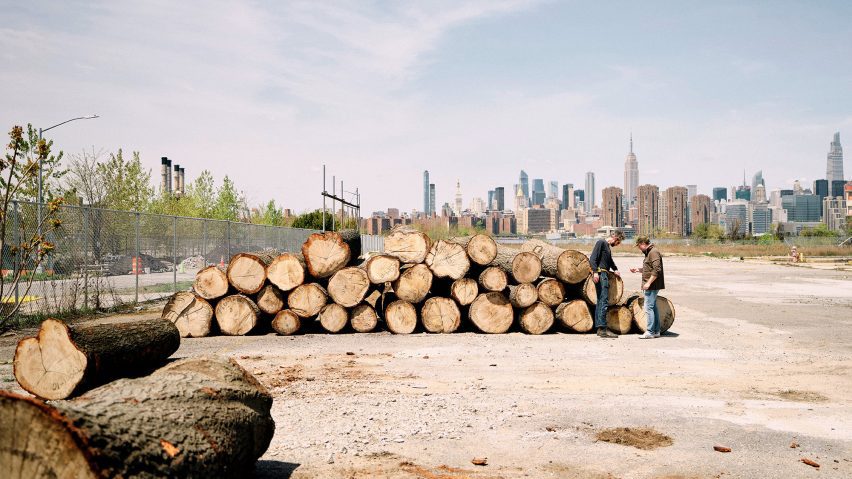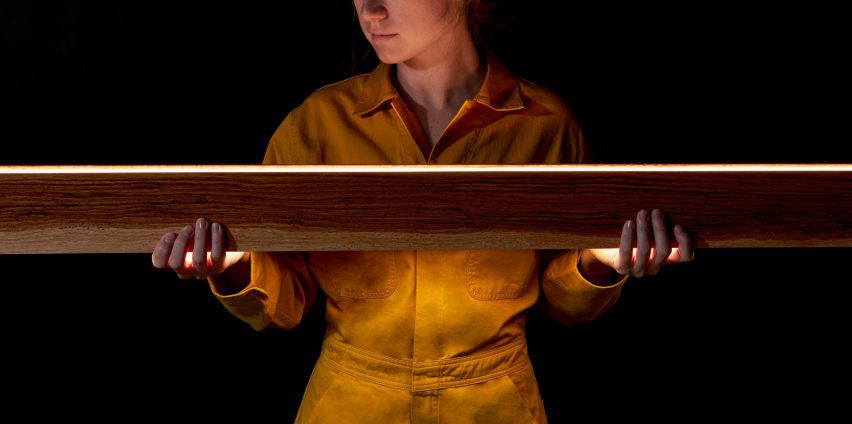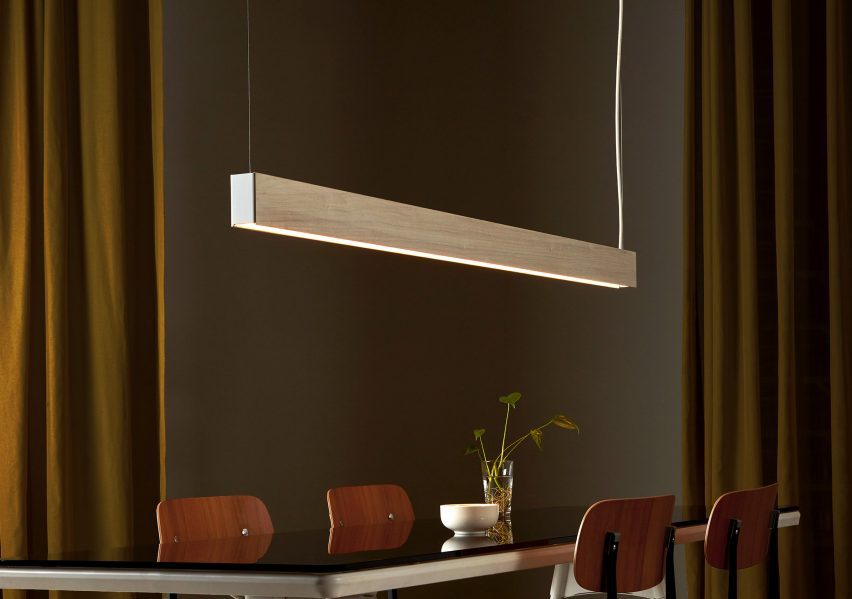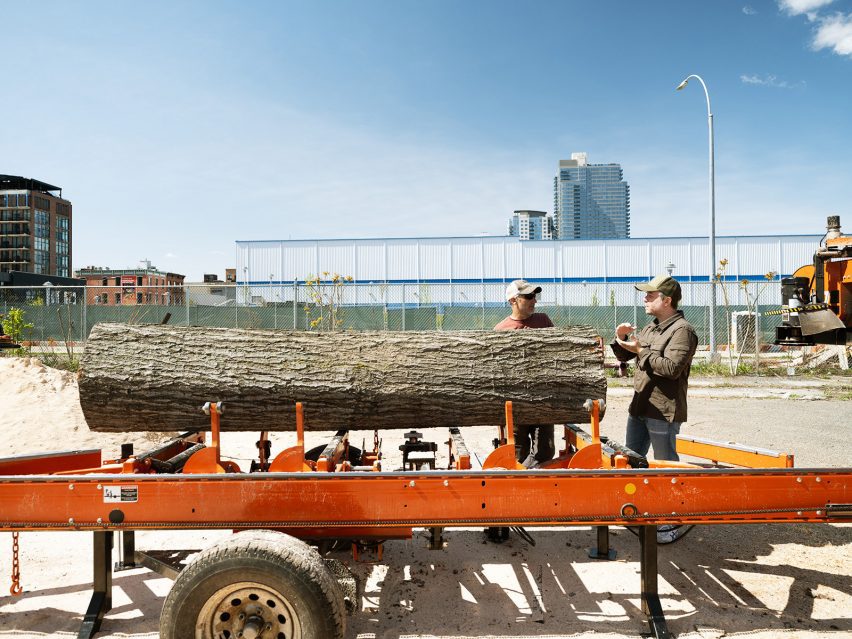
Stickbulb creates light fixtures using wood from salvaged New York trees
New York design studio Stickbulb has launched Treeline, a series of lighting created using wood sourced from trees that had been removed from New York City's "urban forest".
The Treeline lighting series comprises long, wood-panelled fixtures that are suspended from each end by wire and range from four to eight feet (1.2 to 2.4 metres) in length.

Made from pin oak, one of the most prevalent trees in New York City, the fixtures were fabricated by the studio in the city.
They were made using wood collected from trees removed from the city's green spaces and streets through a collaboration with NYC Parks Department and Brooklyn wood supplier Tri-Lox.
"[Treeline] was specifically designed to be a product of a new supply chain in New York City, which is taking the wood waste from the urban forest operations, proving that it can be used locally and made into beautiful products," Stickbulb co-founder Russell Greenberg told Dezeen.
"It's all about reducing waste and raising the profile of salvage – and trying to mainstream it."

New York City, which contracts outside parties to do maintenance on its trees, removes more than 10,000 from the seven-million strong stock of trees in the city each year.
Typically, the wood collected from the trees, which are downed for various reasons like disease and storms, ends up being mulched or sent to one of the local landfills.
According to Greenberg, the studio was made aware of this waste and decided to try and save the wood.
"Some of it is beautiful old-growth wood with really tight grain," Greenberg said. "This is the smartest, lowest-carbon material we could possibly be working with."
Because of the inconsistent size and quality of the wood, the studio has also set up a depot where it stores wood bought from the city.

At the depot, the Stickbulb team can ensure its stock of wood for further production as well as evaluate the wood, removing metal and other debris from the supply.
It was important for the team to raise awareness of the usefulness of the wood, without relying on an aesthetic that made the salvaged nature of the material obvious.
"Normally, when someone thinks of salvage, they think of something that has a lot of rustication, that screams salvage when you look at," Greenberg said. "For us, that's not the case."
He noted that as only a single design is currently in production, the wood type needed is very specific, but in the future hopes to scale up the project to include more of the salvaged wood.

Greenberg hopes to expand the pilot so that the money for production could also go towards a more robust forestry program in the city.
This could create a circular economy around wood that also incorporates the deaths of trees, which Greenberg noted is usually overlooked in favour of planting and maintenance.
"No one wants to talk about trees getting removed or dying in the city," he said. "Everyone wants to talk about how are we going to plant more trees – both of these are important conversations to have."

"But if you're not thinking about the full lifecycle, which includes death, you're not thinking about the whole thing," he added.
Stickbulb has worked with salvaged wood from other sources in the past, including a line made from wood recovered from a water tower. Other studios to use reclaimed wood include Ptacek Home, which created a line of decor with wood from trees downed by storms.